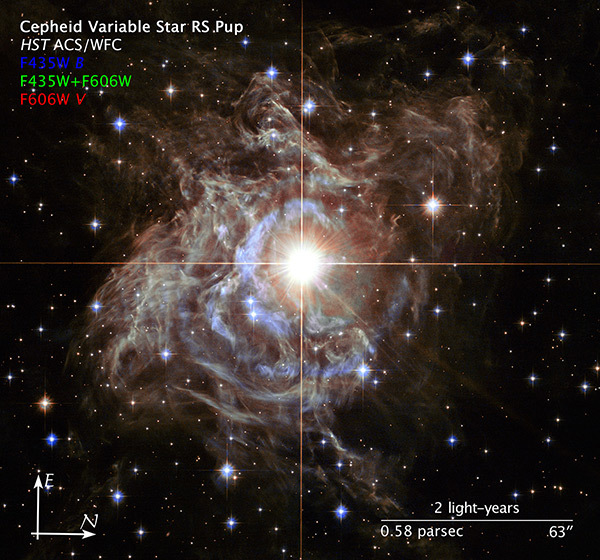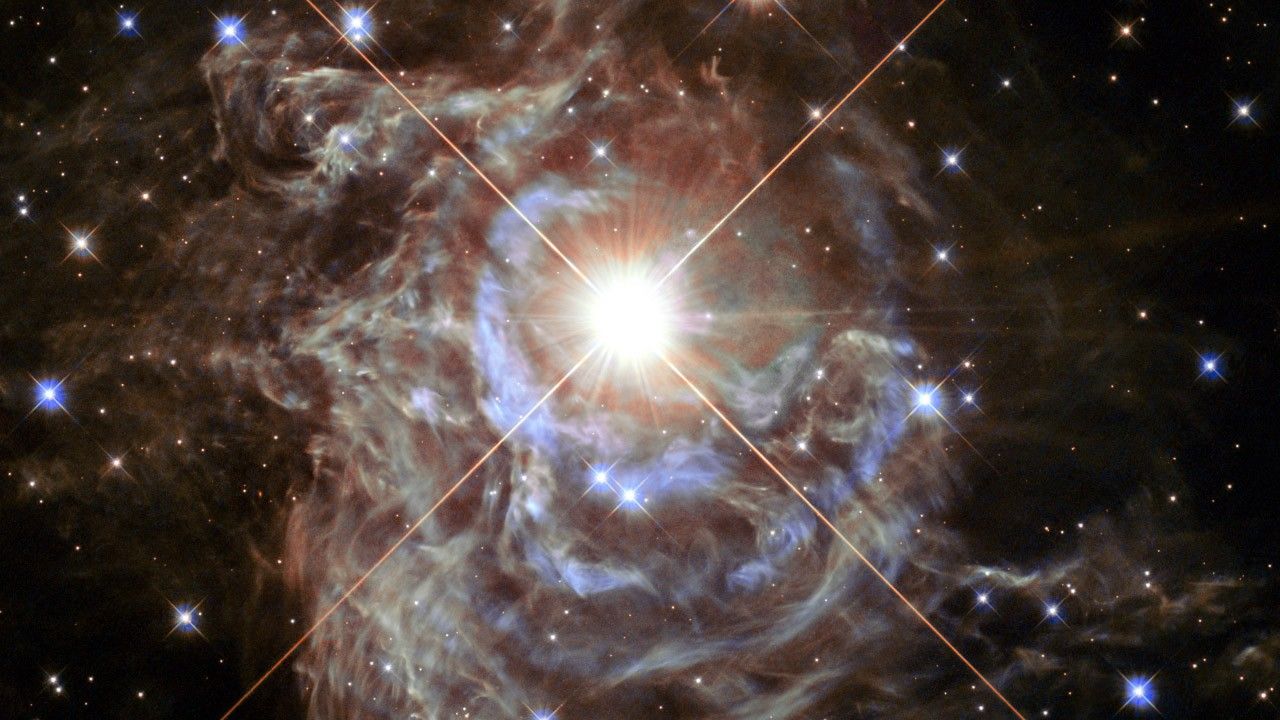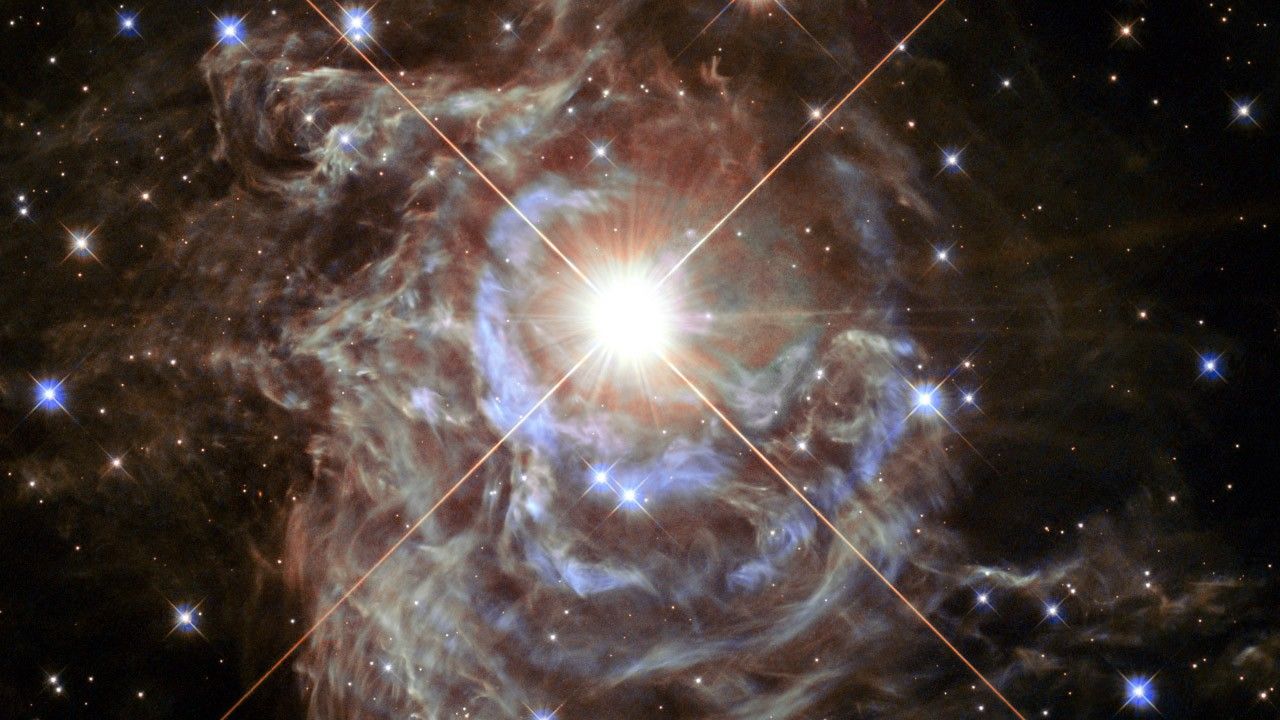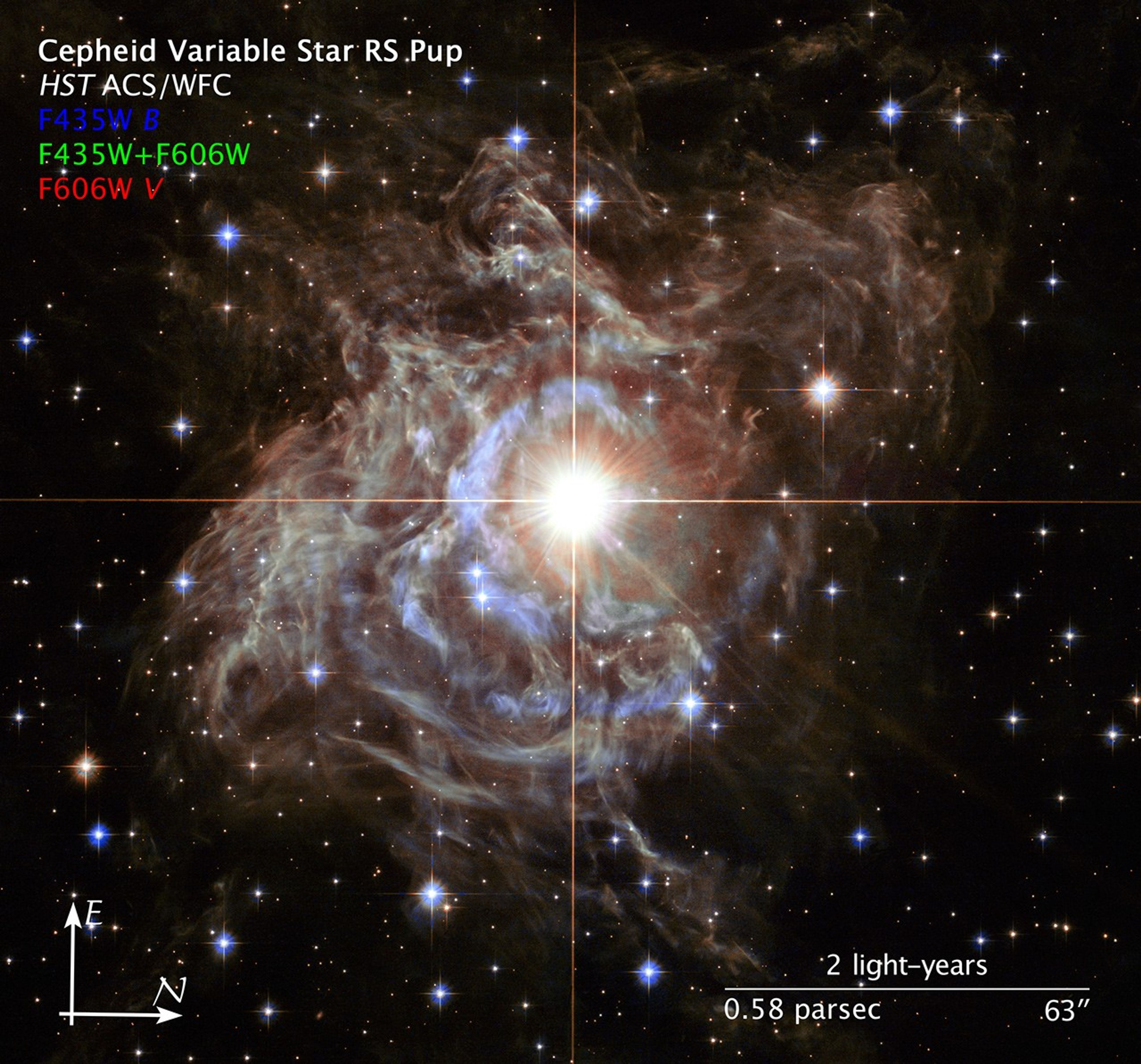1 min read
Cepheid Variable Star RS Puppis

This festive NASA Hubble Space Telescope image resembles a holiday wreath made of sparkling lights. The bright southern hemisphere star RS Puppis, at the center of the image, is swaddled in a gossamer cocoon of reflective dust illuminated by the glittering star. The super star is ten times more massive than our Sun and 200 times larger.
RS Puppis rhythmically brightens and dims over a six-week cycle. It is one of the most luminous in the class of so-called Cepheid variable stars. Its average intrinsic brightness is 15,000 times greater than our Sun's luminosity.
The nebula flickers in brightness as pulses of light from the Cepheid propagate outwards. Hubble took a series of photos of light flashes rippling across the nebula in a phenomenon known as a "light echo." Even though light travels through space fast enough to span the gap between Earth and the Moon in a little over a second, the nebula is so large that reflected light can actually be photographed traversing the nebula.
By observing the fluctuation of light in RS Puppis itself, as well as recording the faint reflections of light pulses moving across the nebula, astronomers are able to measure these light echoes and pin down a very accurate distance. The distance to RS Puppis has been narrowed down to 6,500 light-years (with a margin of error of only one percent).
About the Object
- R.A. PositionR.A. PositionRight ascension – analogous to longitude – is one component of an object's position.08h 13m 04s.22
- Dec. PositionDec. PositionDeclination – analogous to latitude – is one component of an object's position.-34° 34' 42".70
- ConstellationConstellationOne of 88 recognized regions of the celestial sphere in which the object appears.Puppis
- DistanceDistanceThe physical distance from Earth to the astronomical object. Distances within our solar system are usually measured in Astronomical Units (AU). Distances between stars are usually measured in light-years. Interstellar distances can also be measured in parsecs.6,500 light-years (2,000 parsecs)
About the Data
- Data DescriptionData DescriptionProposal: A description of the observations, their scientific justification, and the links to the data available in the science archive.
Science Team: The astronomers who planned the observations and analyzed the data. "PI" refers to the Principal Investigator.ACS/WFC data of RS Puppis were obtained as part of the HST proposal 11715: H. Bond (STScI and Pennsylvania State University), W. Sparks (STScI), P. Kervella (Observatoire de Paris), A. Merand (European Southern Observatory), D. Bersier (Liverpool John Moores University), P. Fouque (Observatoire Midi-Pyrenees), E. Pompei (European Southern Observatory), G. Perrin (Observatoire de Paris), and V. Scowcroft (Carnegie Institution of Washington) - InstrumentInstrumentThe science instrument used to produce the data.HST>ACS/WFC
- Exposure DatesExposure DatesThe date(s) that the telescope made its observations and the total exposure time.March 26, 2010, Exposure Time: 35 minutes
- FiltersFiltersThe camera filters that were used in the science observations.F435W (B) and F606W (V)
- Object NameObject NameA name or catalog number that astronomers use to identify an astronomical object.RS Puppis
- Object DescriptionObject DescriptionThe type of astronomical object.Cepheid Variable
- Release DateDecember 17, 2013
- Science ReleaseHubble Watches Super Star Create Holiday Light Show
- Credit

This image is a composite of separate exposures acquired by the ACS instrument on the Hubble Space Telescope (HST). Several filters were used to sample broad wavelength ranges. The color results from assigning different hues (colors) to each monochromatic (grayscale) image associated with an individual filter. In this case, the assigned colors are: Blue: F435W (B) Green: F435W (B) + F606W (V) Red: F606W (V)

Related Images & Videos

RS Puppis Rotation Sequence
This movie shows the reflection nebula around the Cepheid variable RS Puppis at seven equally spaced intervals during its 41.4-day pulsation period. Each time RS Puppis reaches maximum brightness, it sends another wave of illumination into the surrounding dust. Thus a pattern of...

RS Puppis Video Sequence (Annotated)
This movie shows the reflection nebula around the Cepheid variable RS Puppis at seven equally spaced intervals during its 41.4-day pulsation period. Each time RS Puppis reaches maximum brightness, it sends another wave of illumination into the surrounding dust. Thus a pattern of...
Share
Details
Claire Andreoli
NASA’s Goddard Space Flight Center
Greenbelt, Maryland
claire.andreoli@nasa.gov





























